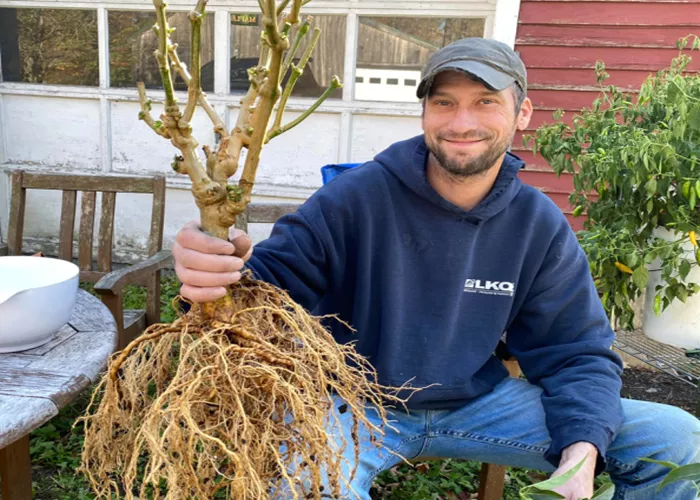In Maine, when the first killing frost arrives, most pepper plants are discarded. But for some local gardeners, these plants are brought inside for the winter, where they can thrive and produce double the harvest once spring arrives.
Peppers, along with their close relatives—tomatoes and eggplants—are technically perennial plants. This means that in warmer climates, they can live and produce fruit for multiple years. In Maine, however, where winters can be harsh, overwintering peppers requires extra care. But the effort is worth it for many growers, who find that these overwintered plants are hardier and produce more fruit in the following growing season.
Stasha Baldwin and her family have been overwintering jalapeno plants for several years at Wolf Creek Family Farm in Sidney. They keep their peppers in a spare bedroom with ambient light and temperatures between 45 and 55 degrees Fahrenheit. Baldwin says these second-year plants typically yield about twice as many peppers and are more resilient than fresh seedlings. Additionally, they bear fruit earlier in the season, extending the growing window for the farm.
Baldwin and her fiancé, Gerry Campbell, are working to expand this method, hoping to help other Mainers increase their pepper yields on the same amount of land. To do this, they are applying for a research grant from the Sustainable Agriculture Research and Education Program (SARE), which is funded by the U.S. Department of Agriculture. They plan to explore efficient, sustainable ways to heat greenhouses for overwintering peppers.
For those interested in trying this technique, Baldwin offers some tips. First, gardeners should dig up their pepper plants before the first frost. After trimming the plants to just a couple of inches above the node (the part where the plant branches), rinse the roots clean and trim them further. Then, replant the peppers in sterile soil. This helps reduce the risk of pests and disease. Some gardeners also recommend rinsing the roots with insecticidal soap for extra protection.
To overwinter peppers successfully, keep them in a room that stays between 45 and 60 degrees Fahrenheit. Temperatures above 60 degrees could cause the plants to start growing again, while temperatures below 45 degrees could freeze the roots. The plants won’t need much water—just enough to keep the soil dry but not completely parched. Baldwin notes that the method has about a 50 percent success rate for her, though that number might improve with more consistent attention.
For those who aren’t willing to take the risk, peppers and tomatoes can also be planted in pots and moved indoors during the colder months. However, they will need to be “hardened off” to adjust to the changing temperatures. This involves taking them outside for a short period each morning and gradually increasing the time they spend outside each day. If bringing plants back indoors, the process should be reversed to avoid shocking them.
Eggplants, which need warmer temperatures and more sunlight to grow, may also benefit from this method. Alternatively, gardeners can take 4- to 6-inch cuttings, root them in water, and pot them until spring.
Tomatoes can be trickier. They require a warm and sunny space to survive the winter, such as a heated greenhouse or a bright windowsill. Another option is the “bare root” method: before the first frost, uproot the plant, trim it to about a foot in height, and wash or brush off the roots. Bundle the roots in damp newspaper or moss, wrap them in cotton cloth, and then cover with plastic. Store the bundle in a cool, humid spot until spring. If you have a very warm indoor space with extra lighting, you can also bring the entire plant inside.
With a little planning and care, Mainers can extend their growing season, enjoying larger, more productive plants year after year.
Related topics:


